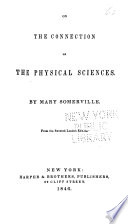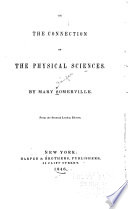 | Richard Green Parker - 1838 - 266 pages
...reflects an entire image of the luminary ; bat as the image can be seen only by reflected rays, and the angle of reflection is always equal to the angle of incidence, the image can be seen only in that spot where these angles meet. 546. Objects seen by moonlight appear... | |
 | John White Webster - 1839 - 592 pages
...obliquely the light falls upon the surface, the greater in general is the reflected portion. In these cases the angle of reflection is always equal to the angle of incidence. Let aa represent pencils of light falling upon the surface of a polished piece of glass B, the perpendicular... | |
 | William Mackenzie - 1841 - 326 pages
...straight lines. 2. That falling upon certain surfaces, light is reflected from them ; and, in those cases, the angle of reflection is always equal to the angle of incidence. 4. That light consists of differently coloured rays, possessing different degrees of refrangibility.... | |
 | John M. Moffat, Walter Rogers Johnson - 1842 - 498 pages
...reflection of perfectly elastic solids. Hence the sonorous vibrations being propagated in right lines, the angle of reflection is always equal to the angle of incidence. Thus suppose a sound to.be emitted from A in the annexed figure, and to impinge on a dense plane, EB F at... | |
 | Charles Alfred Lee - 1843 - 346 pages
...transmission of sound. Sound is also reflected like light, and indeed is subject to the same laws, for the angle of reflection is always equal to the angle of incidence. Reflected sound is termed an echo. The rolling of thunder is supposed to depend partly on the sound... | |
 | Richard Green Parker - 1844 - 276 pages
...reflect* an entire image of the lomiuary ; but as the image can be seen only by reflected rays, and the angle of reflection is always equal to the angle of incidence, the image can be seen only in that spot where these angles meet. 546. Objects seen by moonlight appear... | |
 | Mary Somerville - 1846 - 506 pages
...which would otherwise be iavisible. Whatever the reflecting surface may be, and however obliquely the light may fall upon it, the angle of reflection is...the surface at C, they will be reflected into CS, C S', so that the angle SCP will be equal to the angle ICP, and S' CP equal to 1' C P. That is by no... | |
 | Mary Somerville - 1846 - 496 pages
...reflecting surface may be, and however obliquely the light may fall upon if. the angle of reflection ia always equal to the angle of incidence. Thus IC, I'...the surface at C, they will be reflected into CS, r s'. so that the angle SCP will be equal to the angle ICP, and S' CP equal to I' C P. That is by no... | |
 | Mary Somerville - 1846 - 496 pages
...which would otherwise be iavisible. Whateverihe reflecting surface may be, and however obliquely the light may fall upon it. the angle of reflection is always equal to the angle of incidence. Tims 1C, 1' C, being rays incident on the surface at C, they will be reflected into CS, C 8', so that... | |
 | John Lee COMSTOCK (and HOBLYN (Richard Dennis)), John Lee COMSTOCK - 1846 - 506 pages
...part, and called lookingglasses. The doctrine of mirrors depends wholly on that fundamental law, that the angle of reflection is always equal to the angle of incidence. MOBILITY. That property of matter by which it is capable of being moved from one part of space to another.... | |
| |